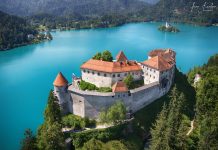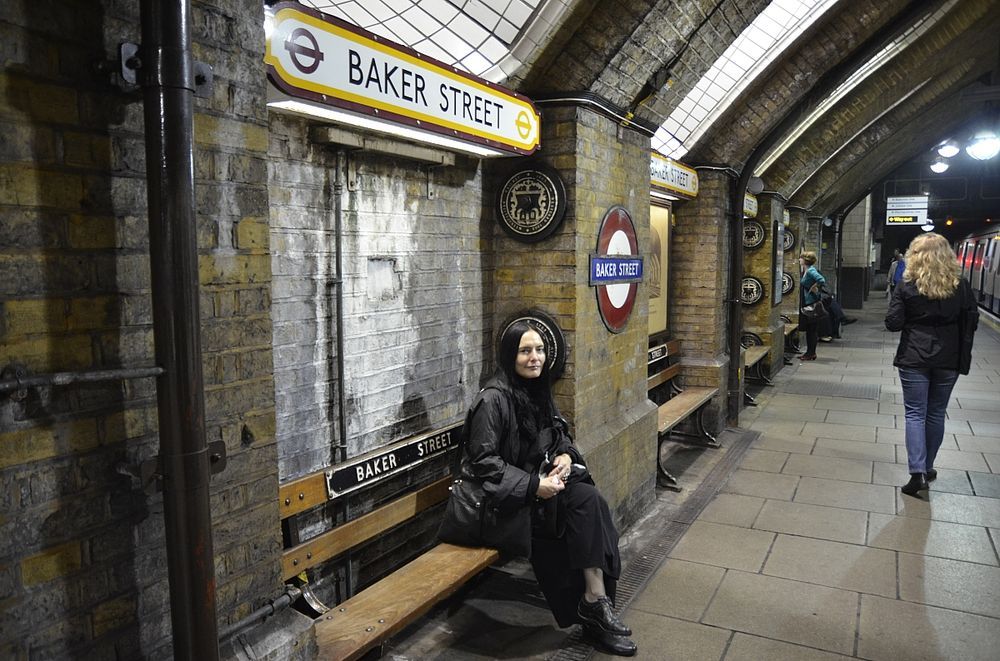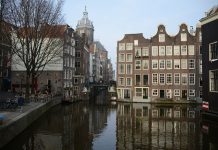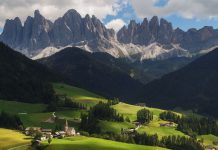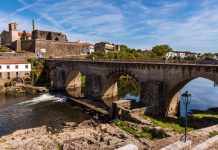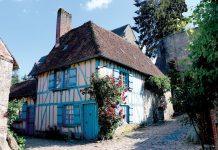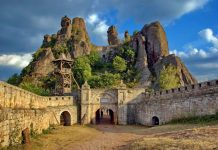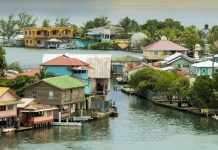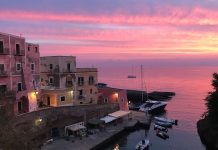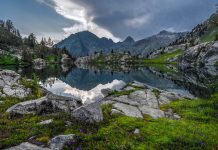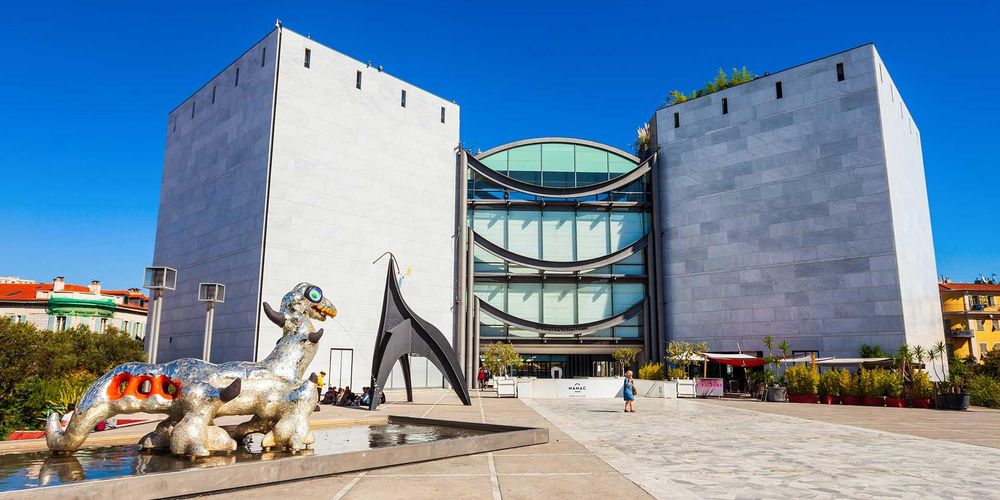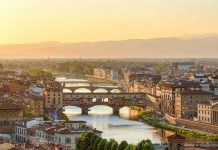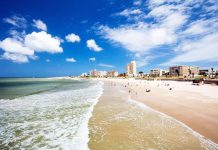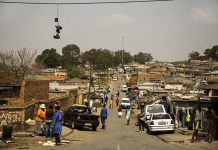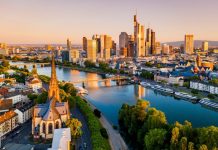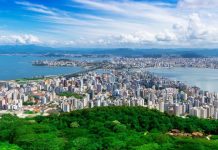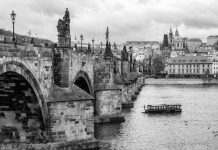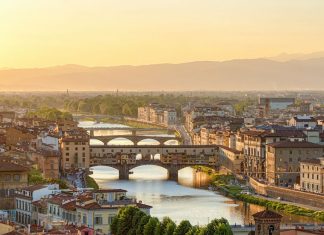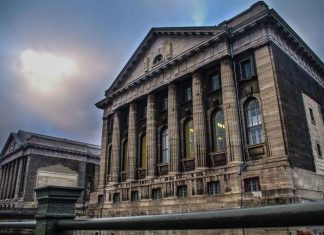Nice’s famous Promenade des Anglais stretches along the coast from the airport to the old town and the quai des Etats-Unis to the east, facing the sparkling blue seas of the baie des Anges (the Bay of Angels). On the seaside there’s a long walkway, always full of people sitting or strolling along looking at the sea, cyclists and runners. On the land side, the Promenade des Anglais is lined with hotels, restaurants and cafes.
The most famous hotel, the Negresco, is still going strong, an over-the-top lesson in grand living. Go inside for the glass roof of Gustave Eiffel and the rotunda dripping with chandeliers.
A glorious celebration of Belle Epoque architecture, the Promenade was named after the English, who pretty well invented the Côte d’Azur, coming here during the winter from the 18thcentury onwards to escape cold North Europe, then disappearing off again in April. In the early 19thcentury, it was difficult to get to the sea from the old town of Nice, so the Brits caused the grand road to be built in 1820. In 1882 Queen Victoria appeared bringing her own supplies of course – heaven forbid she should eat French food. She socialized with her cousin Leopold II of Belgium and Sarah Bernhardt and enjoyed the resort so much (she hated Monte Carlo) that she became a regular winter visitor up to 1899. Setting the fashion, other monarchs swooped on the town that was undoubtedly the Queen of the Riviera.
Encapsulating the aristocratic style of the 19thcentury is the neo-classicalPalais Massénaat 35 promenade des Anglais at the corner with 65 rue de la France.
Built in 1898 in lovely gardens and now a museum, it takes you from Napoleon (his death mask is interesting, alongside the jewellery of his Empress Josephine) to the 1930s.
Old Town of Nice
The Old Town is pure Nice, the place where the local Niçois lived and worked, a real contrast to the sweeping Promenade des Anglais. To the east, Castle Hill overlooks the winding cobbled streets and is worth climbing for the view. Wander through the streets, taking in the Chapelle de la Miséricorde, one of the most beautiful Baroque churches in the world, and the Palais Lascaris. Tucked into the old streets, this baroque extravaganza was built by Lascaris, a 17th-century aristocrat who traced his family back to the 13thcentury.
Don’t miss the pharmacy with its Delftware containers of herbs that formed the basis of modern medicine. The old town is centered around Place Rossetti and the pretty Baroque Ste-Réparate cathedral. After a quick visit, try any of the wonderful array of ice creams and sorbets atFenocchio.
The Old Town is all about wandering through the streets and ducking down the alleyways. Don’t miss rue Pairolière, filled with food shops that give you the flavors of the Mediterranean, and the nearby small fish market in Place St-François which takes place from 6am to 1pm daily except Tuesdays.
Try some of the bistros, and if you’re pressed for time, go for the localsocca, a dish of Provençal pancakes made from chickpea flour. France’s top chef, Alain Ducasse recommends Chez Pipo; also try Chez Theresa.
The Cours Saleya Market
The Cour Saleya fills up from early morning with a gorgeous market, full of the colors and perfumes of the freshest vegetables that overflow from the stalls. Cafes, bars and restaurants line the square, open for coffee and croissants in the morning to late drinks at night. The market runs from Tuesday to Sunday; on Mondays it’s the place to hunt for antiques.
Flowers played a big part in Nice’s history and you can still see the poly tunnels of the commercial flower growers glinting in the sunlight on the surrounding hills.
Nice opened the first wholesale cut flower market in the world in 1897, where the public could buy flowers after the commerce was done. Today it’s just the public who come to buy in the Cours Saleya. The whole long square is dominated by the Chapelle de la Miséricorde, well worth going into for its rich, baroque décor.
Russian Orthodox Cathedral of St Nicolas
The Russian aristocracy came to Nice in the late 19thand early 20thcenturies, forming a community almost as big and important as the English. The arrival of the young prince Nicholas Alexandrovich, son of the Russian Tsar in 1864 merely added the final touch of approval. The cathedral was consecrated in December 1912 in his memory; he died in Nice in 1865 at the early age of 25 having been sent here for his health.
It’s one of the most extravagant buildings in a city which has its fair share of ornate architecture.
Musée d’Art Moderne et d’Art Contemporain
The Museum of Modern and Contemporary Art (MAMAC)is one of the most exciting new projects Nice has unveiled in the last few years. Its object is to show the importance of two of modern art’s great movements: the avant-garde French and American from the 1960s to today and the influence of Nice with French names like César, Arman and Niki de Saint-Phalle. There’s a permanent collection of Nice’s Yves Klein and a series of temporary exhibitions.
With artists like Kenneth Noland, Jules Olitski, Larry Poons, Frank Stella and Sol LeWitt, as well as Warhol, Lichtenstein, Arman and Christo, this makes for an innovative museum.
You can’t miss it; the building stands out with its modern triumphal arch at the end of the covered course of the Paillon which also has a theater, forming part of the Promenade des Arts.
Muséee Marc Chagall
At the foot of the hill that leads up to Cimiez you come to the Marc Chagall museum with its greenery and pool. It’s the most important Chagall collection in the world, so is a popular venue for international visitors. The light and airy museum was built especially for Chagall’s Biblical Message and opened by Chagall himself in 1972. The Song of Song canvases, based on the Old Testament, are a wonderful mix of hues between pink and red.
Along with the 17 paintings is a large collection of stained glass and sculpture as well as all the drawings showing the Exodus and other paintings.
Cimiez in Nice has Roman remains, a monastery, gardens and museums
Get a taste of upper crust Nice life on the hill of Cimiez that looks down over the city and the Mediterranean. On a day when the heat of the summer makes Nice difficult, there’s always a breeze here. It’s always been an important part of Nice; the Roman elite settled here in the days when Nice was the capital of the region.
There’s plenty to see apart from the poshbelle époquevillas and their gardens.
There are Roman remains of the ancient town and a small amphitheater, which you can see, along with different artefacts from the site at the Musée d’Archéologie.
Monks have always spotted a good thing, and the Franciscans were no exception. In the 15th century, they founded a monastery on the site of ,an earlier 9th-century Benedictine foundation. Some Franciscan friars still live in the pretty monastery which also has a museum. The 16th-century buildings are well worth a visit; the church has three religious paintings of the 15th and 16th-centuries by the local artist, Louis Bréa
The cemetery, which is open daily, contains the graves of Raoul Dufy and Henri Matisse whose museum is nearby. The monastery’s wonderful gardens are made for strolling around, and for catching the view.
The Matisse Museum in Nice
The Genoese 17th-century villa that houses theMatisse museumlies between the Roman arena and the excavations in Cimiez. He wintered in Nice from 1916, then from 1921 to 1938 lived in an apartment overlooking place Charles-Félix in the Old Town, painting those glorious colorful canvases of odalisques, interiors and sea views. The museum gives you a real idea of Matisse’s work running from the 1890s when he produced Nature Morte Aux Livres to the later cut-outs from the early 1950s before his death.
There’s also a lot of personal papers, photos and documents, giving a picture of the man.
Matisse adored Nice and the south of France, particularly as his old friends were there like Renoir, as well as Pierre Bonnard and Picasso in Antibes. He died in Cimiez in November 1954 at the ripe old age of 85.
The Parks and Gardens of Nice
Nice might be a large, bustling city, butthe Queen of the Riviera is a very green city with plenty of parks and gardens to tempt you on a hot summer’s day.
Start at the newest, the new 30-acre green belt running between the Musée d’Art Moderne et d’Art Contemporain (MAMAC) and the Théâtre de Verdure on the Quai des États-Unis.The Promenade du Paillonsnakes through the city center on its green way.
It’s planted with exotic trees and plants from all over the world, has water features and a lake and models for children.
At the east end of Nice, the Parc de la Colline du Chateau (Castle Hill Park) was once the setting for a grand fortress taken apart by Louis XIV’s soldiers in 1706. It’s worth the climb from Place Garibaldi or the stairway at the Quai des États-Unis (or take the lift) for a wonderful panorama of the city below you and Baie des Anges.
Up in Cimiez, make for theGarden of the Monasterywhich was once the monks’ orchard and vegetable garden. It’s still laid out around a well and the air is scented with the climbing roses that scramble over the old arches. There’s another great view from here.
Major Events in Nice
Nice, as the capital of the Riviera, is a lively city with something happening daily. Here is my pick of the top events throughout in Nice.
- Spring:
February 13-March 1: The most famous event is theNice Carnivalthat kicks off the year from mid February to March and now has a special Gay Carnival, the first in France. The vast celebration takes over the streets with huge floats, and ends with a spectacular firework display.
There’s also a Carnival run of either 5 or 10 kms.
March 14 15: Paris to Nice Cycle ‘Race in the Sun’covers 807 miles (1,300 kms) in 8 stages with some grueling runs at La Turbie and Col d’Eze.
- Summer:
June 28: TheAnnual Iron Man France Championshipsees over 2,500 professional and amateur triathletes from around 52 different countries taking part. They complete a 2.5 mile swim, 112 miles of cycling and a 26.2-mile run.
July 7-12: TheNice Jazz Festivalis one of the big jazz events of the year, taking place in the Place Masséna.
July 13-August 17: The Festival of Cimiezholds a series of concerts and master classes outdoors in the Monastery’s cloister, normally shut to the public.
June to October: The Promenade des Anglais Exhibitionfrom June to October will take the theme of the famous boulevard and take place in every one of the city’s museums.
July 14: Bastille Daysees a fabulous firework display over the Baie des Anges.
Take a picnic, pick a spot and enjoy the pyrotechnics.
- Fall:
September: The annualLou festin dour Pouort (Festival of the Port)sees the old port fill with boats of all kinds. It’s done in conjunction with Cannes, Golfe-Juan and Villefranche and all the ports have a program of entertainment and events.
Mid September: The Nice-Pasqui Trophy Regattasees old sailing ships take gracefully to the waters of the Mediterranean.
October: The Extreme Sailing Series in Niceis just one of the 8 stages that the series takes in, starting in Singapore in March.
- Winter:
Mid November: The Salon du Chocolat et Saveursarrives in Nice just in time for Christmas. It’s an annual event celebrating chocolate and the chance to try some of the offerings from the world’s best chocolatiers.
December: Christmas Marketsare not just for the north. Check out the Nice market that has an outdoor skating rink, stalls selling gifts and entertainment.

